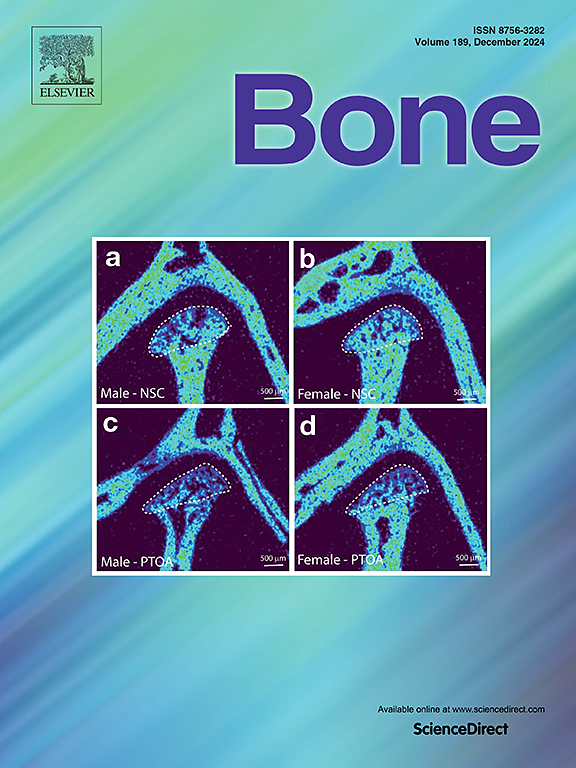Large-scale proteomics analysis identifies plasma protein biomarkers and potential therapeutic targets for rheumatoid arthritis: A prospective study in UK Biobank
IF 3.6
2区 医学
Q2 ENDOCRINOLOGY & METABOLISM
引用次数: 0
Abstract
Rheumatoid arthritis (RA) is a chronic autoimmune disease characterized by symmetric joint swelling, pain, and progressive bone destruction. Although the advent of biologic therapies has significantly improved treatment outcomes, challenges remain in early detection and timely intervention. This study utilizes a nested case-cohort design from the UK Biobank (UKB), integrating proteomics, genome-wide association studies (GWAS), and single-cell RNA sequencing data from the GEO database to systematically evaluate proteins associated with RA risk and identify novel therapeutic targets. Through Cox analysis of proteomic data from 706 RA patients and 1410 controls, we identified 440 plasma proteins. Mendelian randomization analysis further narrowed down 35 plasma proteins, and colocalization analysis ultimately confirmed strong associations and colocalization for ICAM3, CTSV, and RNASET2 in the UKB-PPP dataset. Additionally, we developed an RA risk prediction model based on plasma proteins using the XGBoost algorithm, which demonstrated moderate performance (AUC = 0.74) with a prediction window of up to 5 years in advance. Furthermore, through functional enrichment analysis, protein-protein interaction (PPI) networks, and single-cell RNA sequencing, we elucidated the biological roles and mechanisms of these proteins in RA pathogenesis, providing new strategies for identifying biomarkers and developing targeted therapies for rheumatoid arthritis.
大规模蛋白质组学分析确定类风湿关节炎的血浆蛋白生物标志物和潜在治疗靶点:英国生物银行的一项前瞻性研究。
类风湿性关节炎(RA)是一种慢性自身免疫性疾病,以对称关节肿胀、疼痛和进行性骨破坏为特征。尽管生物疗法的出现显著改善了治疗效果,但在早期发现和及时干预方面仍然存在挑战。本研究利用英国生物银行(UKB)的嵌套病例队列设计,整合蛋白质组学、全基因组关联研究(GWAS)和GEO数据库的单细胞RNA测序数据,系统地评估与RA风险相关的蛋白质,并确定新的治疗靶点。通过对706例RA患者和1410例对照组的蛋白质组学数据进行Cox分析,我们鉴定出440种血浆蛋白。孟德尔随机化分析进一步缩小了35种血浆蛋白的范围,共定位分析最终证实了UKB-PPP数据集中ICAM3、CTSV和RNASET2的强关联和共定位。此外,我们利用XGBoost算法建立了基于血浆蛋白的RA风险预测模型,该模型表现出中等的性能(AUC = 0.74),预测窗口长达5 年。此外,通过功能富集分析、蛋白-蛋白相互作用(PPI)网络和单细胞RNA测序,我们阐明了这些蛋白在类风湿关节炎发病中的生物学作用和机制,为识别生物标志物和开发靶向治疗类风湿关节炎提供了新的策略。
本文章由计算机程序翻译,如有差异,请以英文原文为准。
求助全文
约1分钟内获得全文
求助全文
来源期刊

Bone
医学-内分泌学与代谢
CiteScore
8.90
自引率
4.90%
发文量
264
审稿时长
30 days
期刊介绍:
BONE is an interdisciplinary forum for the rapid publication of original articles and reviews on basic, translational, and clinical aspects of bone and mineral metabolism. The Journal also encourages submissions related to interactions of bone with other organ systems, including cartilage, endocrine, muscle, fat, neural, vascular, gastrointestinal, hematopoietic, and immune systems. Particular attention is placed on the application of experimental studies to clinical practice.
 求助内容:
求助内容: 应助结果提醒方式:
应助结果提醒方式:


